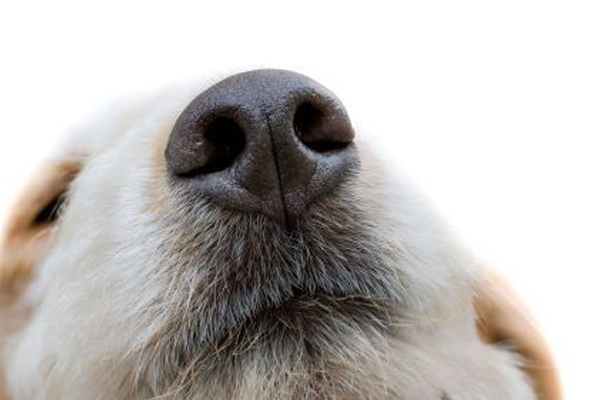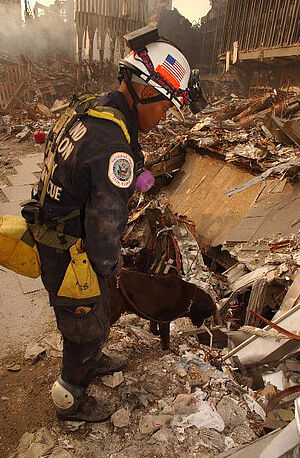The Power of Scent
by Keri Buscaglia | Oct 31, 2014
From Search & Rescue to Sniffing Out Cancer, K-9 Heros Save Lives

We’ve all seen the videos. We’ve all read the stories: pets performing amazing feats to help humans. Man and his best friend have a long history of working side-by-side and perhaps no image is more powerful than the one of Ohlin, the search-and-rescue dog captured working alongside rescue teams on 9/11; sniffing through rubble for scents that signaled signs of life.
The nose of a dog is powerful - 100,000 times more powerful than a human’s - to be exact. Recently, researchers have found reason to believe that these sensitive sniffers could be the key in detecting ovarian cancer, before it’s detectable by clinicians or current testing methods.
Each year about 22,000 women in the U.S. are diagnosed with ovarian cancer; most are discovered at an advanced stage because unlike other cancers, there is no early detection test for ovarian cancer. According to the American Cancer Society, about 14,000 women will die from the disease because they didn’t know the signs or symptoms.

Enter Ohlin Part II, named after our national hero from 9/11, a Labrador Retriever and one of five dogs in a new program at the University of Pennsylvania that is working to change those odds and the lives of women.
Ohlin and his team are being trained to hone their acute sense of smell to detect this deadly gynecologic cancer, so that it can be caught earlier and when treatment has better odds of working. Specifically, they are being trained to learn the scents of chemicals emitted by tissue and blood samples, odorants that are altered in the earliest stages of ovarian cancer.
“Our goal is not to put a dog in every hospital, but to help refine the technology by using the exquisite ability of the dog’s nose,” said Dr. Cynthia Otto, who runs the program at the Penn Vet Working Dog Center. According to Dr. Otto, the goal is for the dogs to be trained to narrow down a specific odor so that an inexpensive and a minimally invasive blood test can be developed within the next two years, which can catch ovarian cancer, while it’s still treatable.
So far, the dogs have proven to be more than 90 percent accurate in their detection work which is exactly the odds that Vallie Szymanski, executive director of the Ovarian Cancer Symptom Awareness Organization (OSCA), a Chicago-based nonprofit sponsoring the training of Ohlin.
“(Ohlin) is an engaging and tangible reason to learn more about this disease’s silent and often-missed symptoms,” said Szymanski, who co-founded the OSCA in 2010 in an effort to educate the public about the silent and deadly symptoms of ovarian cancer.
There were more than 300 search and rescue dogs that helped in the rescue effort on September 11, 2001. All of the dogs in the Penn Vet Working Dog Center are named after these loyal and dedicated dogs. Ohlin’s namesake was deployed to the World Trade Center.
Want to see Ohlin in action? Check out a video of him in training or learn how you can help support this research at: ovariancancersymptomawareness.org
